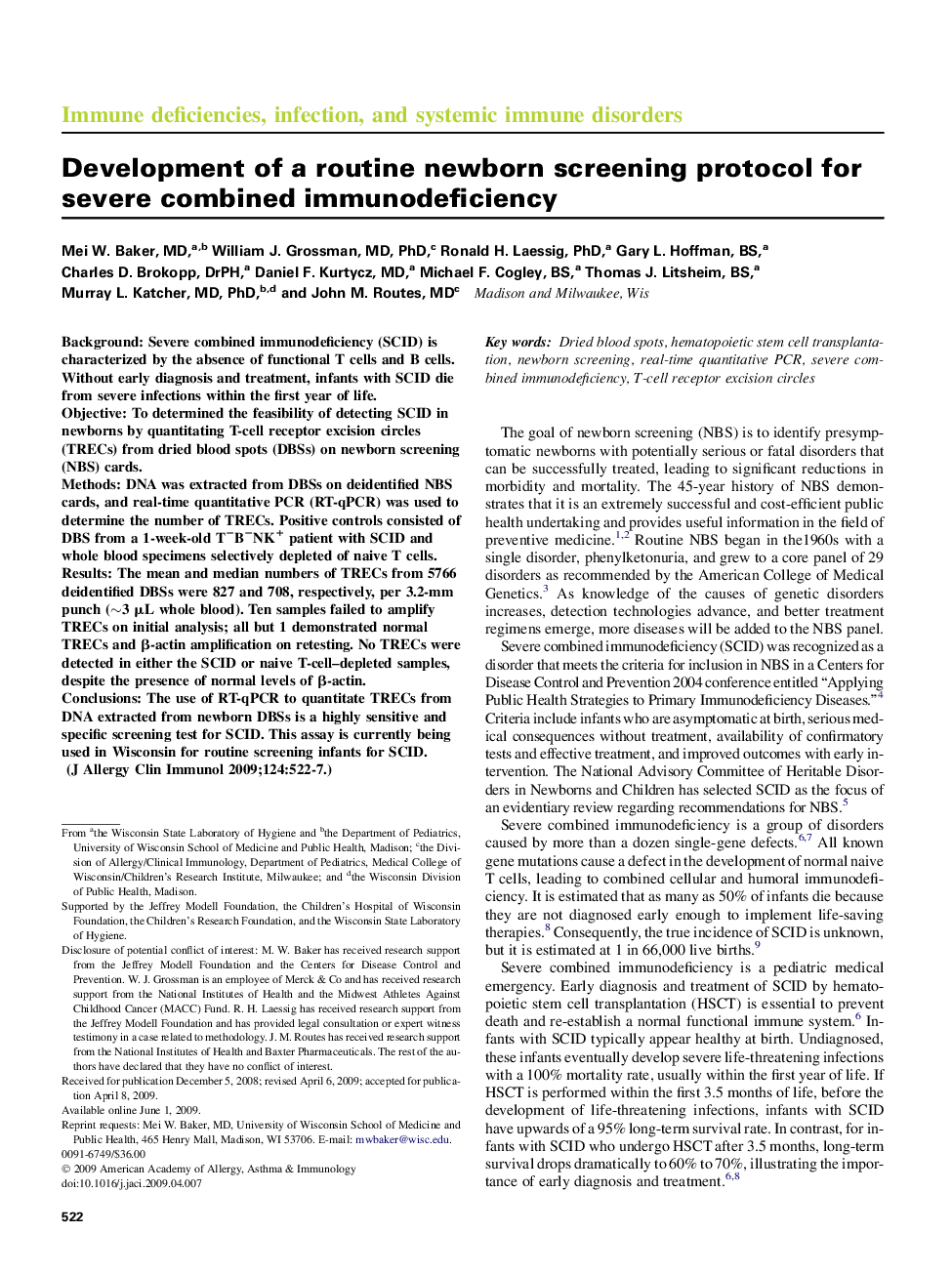| Article ID | Journal | Published Year | Pages | File Type |
|---|---|---|---|---|
| 3200935 | Journal of Allergy and Clinical Immunology | 2009 | 6 Pages |
BackgroundSevere combined immunodeficiency (SCID) is characterized by the absence of functional T cells and B cells. Without early diagnosis and treatment, infants with SCID die from severe infections within the first year of life.ObjectiveTo determined the feasibility of detecting SCID in newborns by quantitating T-cell receptor excision circles (TRECs) from dried blood spots (DBSs) on newborn screening (NBS) cards.MethodsDNA was extracted from DBSs on deidentified NBS cards, and real-time quantitative PCR (RT-qPCR) was used to determine the number of TRECs. Positive controls consisted of DBS from a 1-week-old T−B−NK+ patient with SCID and whole blood specimens selectively depleted of naive T cells.ResultsThe mean and median numbers of TRECs from 5766 deidentified DBSs were 827 and 708, respectively, per 3.2-mm punch (∼3 μL whole blood). Ten samples failed to amplify TRECs on initial analysis; all but 1 demonstrated normal TRECs and β-actin amplification on retesting. No TRECs were detected in either the SCID or naive T-cell–depleted samples, despite the presence of normal levels of β-actin.ConclusionsThe use of RT-qPCR to quantitate TRECs from DNA extracted from newborn DBSs is a highly sensitive and specific screening test for SCID. This assay is currently being used in Wisconsin for routine screening infants for SCID.
